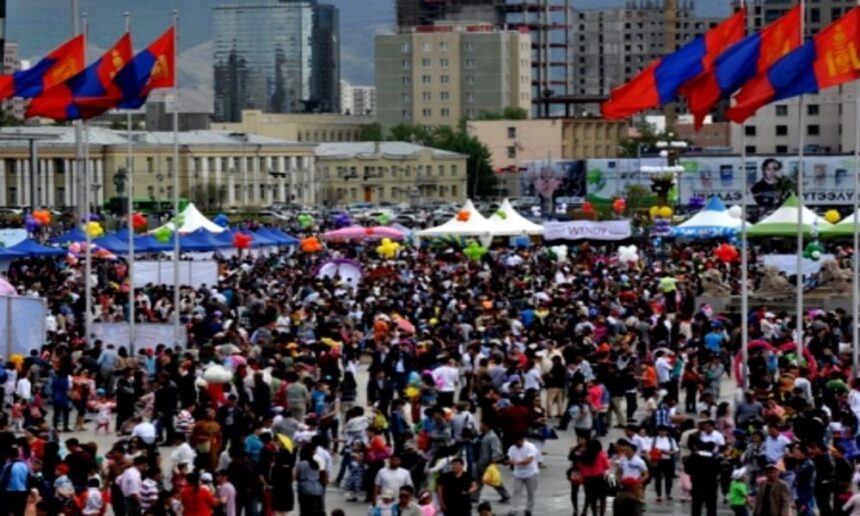If we look at the last decade, we will notice that Mongolia has been growing more distant from the development and advancement happening in the world. Our mentality is currently stuck in a swamp, and what we make our lives busy with is parliamentary elections, presidential elections, potential restructuring of the government, changes to the constitution, and noisy corruption cases that gradually disappear out of sight.
Nothing is getting resolved while the authorities and political parties pretend to find solutions to the very problems they created in the first place, and continue changing cabinet members and other senior officials one after another. Our economy today is shackled with internal and external debts because of political struggles triggered by corruption. And now they are praising themselves for raising more loans and deferring the payment dates.
The leadership of the two political parties that have had the ruling power one after another has only had one priority – retaining their power. Now they are having internal struggles over power and position as their members are spying on each other to get rid of their opponents. Even after 800 years Mongolians are ‘fighting with each other without rest and sleep’ (a historical phrase used to describe internal battles before the unification of Mongolian tribes).
The leadership of our capital city is pretending to be busy with insignificant work such as restricting vehicles from traffic by plate numbers and changing the lanes of specific roads. When it comes to more significant issues, our city is still drowning in flash floods during summer, and breathing in smog when winter comes.
Meanwhile, our people – especially the young, talented people who are willing to take risks – are leaving the country. Almost one hundred thousand people, 10 percent of our workforce, are living abroad, while the visa application queues outside embassies in Ulaanbaatar keep getting longer.
Mongolia’s young people, who make up the majority of our population, are hoping that they will receive the knowledge, education, training, and direction they need here in Mongolia.
Expectations of young people
Forty percent of our population are millennials (those who were born in 1980-2000) who make up the core of our workforce today. The jobs that they will have in the future drastically contrast to the jobs their parents had. The future jobs of millennials are constantly changing. Due to the rapid changes brought to the work environment and conditions by ongoing advances in information and technology, today our millennials face the need to adapt their skills and tools to those changes.
The Future of Jobs report, which was published in 2016 by the World Economic Forum, said that 65 percent of the children who are entering primary school today would be doing jobs that don’t currently exist when they grow up.
In developing countries, the most in-demand jobs are the ones that did not exist ten years ago. For example, there is an increasing need for mobile phone app developers, as the market gets bigger and technology becomes more advanced.
U.S. firm Evans Data Corporation reports that there were 12 million mobile apps developed in 2016, and the number is projected to increase to 14 million in 2020. Self-driving vehicles are now in use, which combine technologies such as artificial intelligence, self-learning computers, and space and speed sensors.
Countries are establishing infrastructure for the knowledge economy, and their educational institutions are experiencing rapid change brought about by technological advances. A lot of manual tasks are now being done by robots. People who do traditional labor are now earning less than operators who have mastered new technologies.
Changing demand for tertiary education
In countries with a knowledge economy, higher income is going to people with professions in natural science, technology, engineering, and mathematics (STEM).
According to the U.S. Census Bureau, there were 9 million people working in the STEM industry in 2015 (6 percent of the federal workforce), and they earned 29 percent more than non-STEM workers. The difference was 26 percent in 2010. The number of STEM jobs increased by 24 percent over the last ten years, compared to 4 percent in non-STEM jobs. This trend is set to continue.
Employers are requiring STEM workers to not only have intuitive skills but also soft skills, including teamwork, creativity, resilience, and social and cultural awareness.
A 2015 international student assessment carried out by the Organization for Economic Co-operation and Development ranked students from 42 countries on their natural sciences, reading, and mathematics ability. While Singapore came first, Mongolia was not even involved, given that we do not even have internal research into STEM and have insufficient information and reports on STEM education and their results.
Our economy is still fully dependent on mining, and our education system still has weak capabilities. Therefore, unemployment is on the rise every year, and our young people desire to go abroad to learn.
When will we adapt to reality, rid our government of corruption, and create more value from the jobs we do?
2017.08.23












